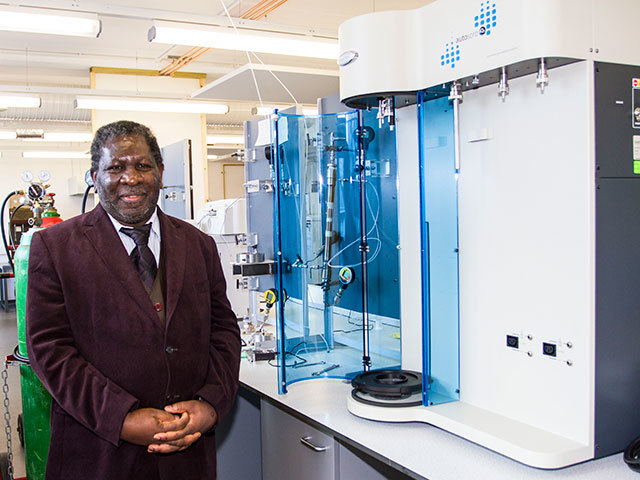
An Aberdeen-based professor has received international funding for an original sustainable energy research project on innovative carbon uses.
Professor Edward Gobina, of Robert Gordon University’s School of Engineering, has received a major Canadian grant for his work with carbon dioxide (CO2).
The C$500,000 (£272,000) grant, by the Climate Change and Emissions Management Corporation (CCEMC) of Alberta, covers a research project which uses technology to convert CO2 into useful chemical components.
RGU was the only UK university to receive funding from the first round of CCEMC’s C$35million Grand Challenge competition, which put out an international call for submissions with a goal to significantly reduce greenhouse gas emissions by fostering development of technologies that create new carbon-based, value added products and markets.
Professor Gobina is developing a device, termed a catalytic membrane reactor, capable of taking flue gases directly from an industrial plant such as a power station, and converting the captured CO2 component into a highly useful intermediate called synthesis gas (syngas).
This can then be utilised in the downstream manufacture of a variety of commercially important intermediary and feedstock chemicals.
Professor Gobina, says: “I am delighted that the project has been recognised at an international level and would like to thank the team at RGU who helped us to achieve success in the first round of the competition.
“This technology is a simple, economic, scalable and easily deployable system which yields a value-added product that will result in significant reduction of greenhouse gases.”
The catalytic membrane reactor consists of porous sintered metallic tubes which provide a structure for a catalytic coating able to promote chemical reactions.
The device will be fed using exhaust gases to rehabilitate the CO2 contained in the exhaust streams into value-added chemical products such as hydrogen and ammonia.
“The flue gas stream comprises CO2, water vapour and oxygen, and will be fed methane at an elevated temperature. The highly dispersed catalyst then converts the fed gases into highly useful chemical constituents,” says Gobina.
“Synthesis gas is perfect for onward conversion using gas-to-liquids chemical engineering technologies into products such as diesel fuel and important feedstock compounds for the chemical industries.
“Our hopes for the future are extremely high as the technology has the potential to also address flue gases from other processes such as refinery or petrochemical flue gases or coke oven flue gas. In the distant future, the process could be adapted to the direct conversion of CO2 from the atmosphere.”
Within the next two years, he hopes to establish a proof-of-process and develop an optimised miniature prototype reactor, helping to address any challenges presented in the catalyst’s performance, mass transfer limitations and scalability.
The technology is expected to be ready for commercialisation by 2020, with the largest market expected to be in North America due to the large concentration of fossil fuel generating plants and the availability of low cost natural gas.
The technology is expected to create a number of economic benefits such as an increase in employment in off-gas processing, and income generated from the production and sale of high-value chemicals.
The RGU project was one of three successful UK institutions selected from a total of 344 submissions from the 37 countries that responded to CCEMC’s call for proposals for the first round of the competition.
The CCEMC will in a year’s time put out another call for proposals that round one winners can apply for to receive additional funding, with one successful project receiving a $35million grant in the competition’s third stage.
Based in Alberta, Canada, the CCEMC announced the winners of the international Grand Challenge at Zero 2014: A Conference for Low Carbon Future.
Recommended for you
